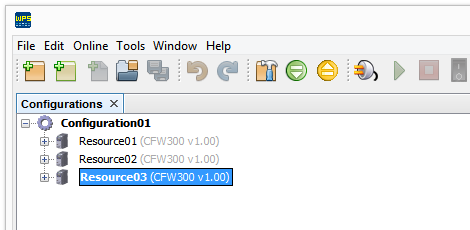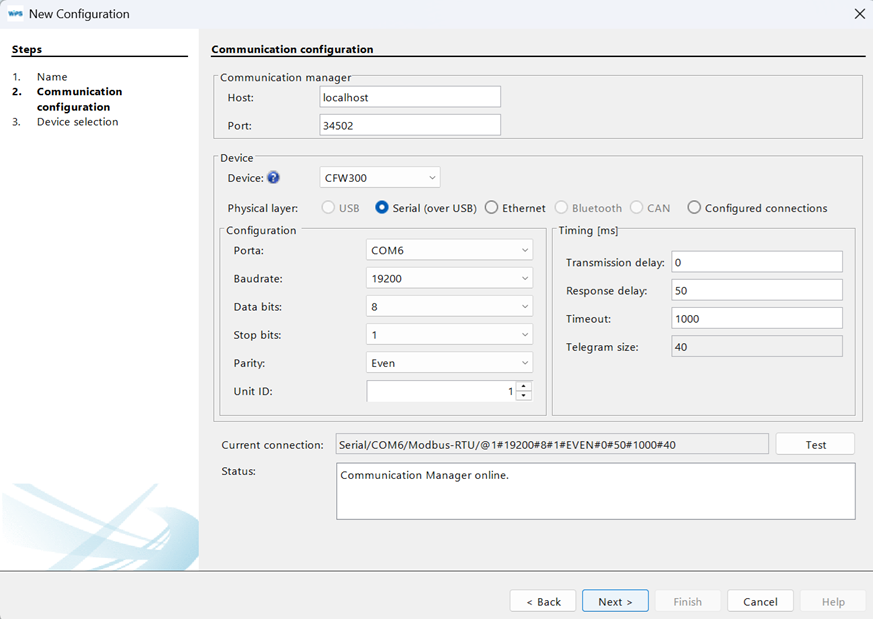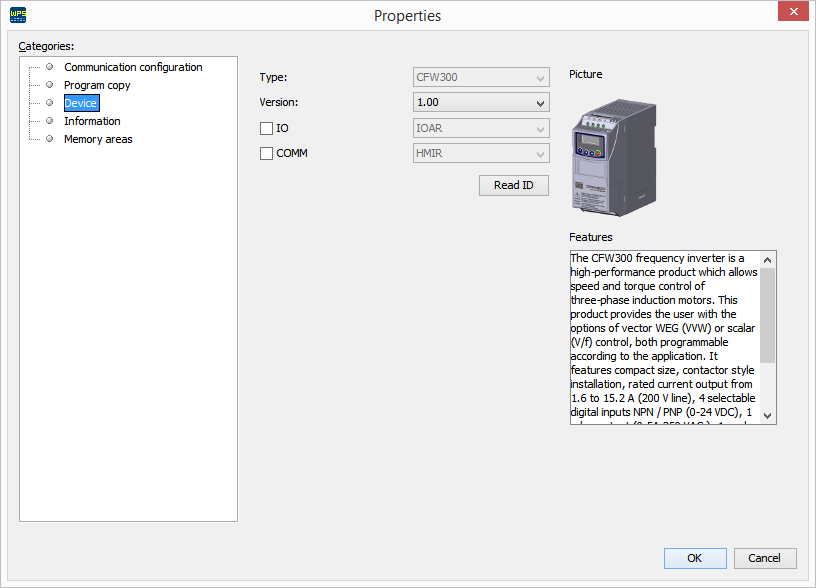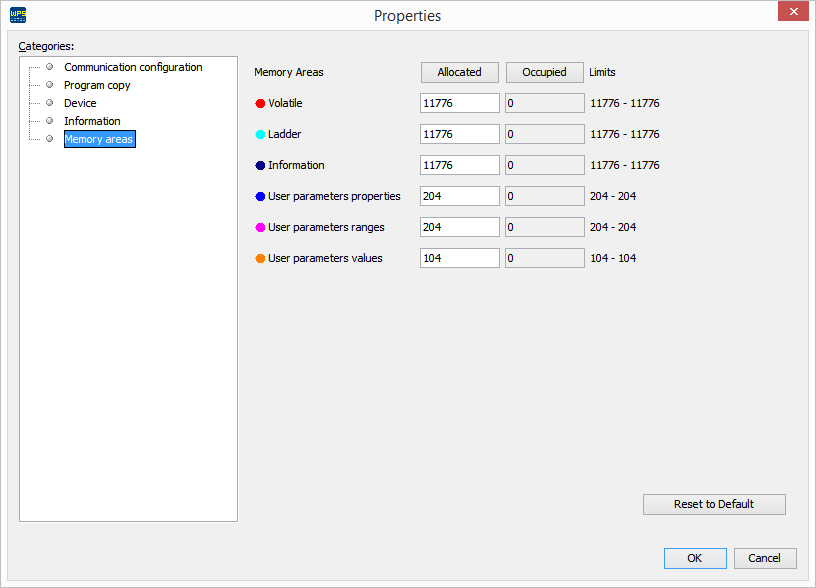Popup Menu - Feature
Overview
The resource pop-up menu provides quick functions related to the selected resource.
The functions available in the resource popup menu are listed below:
- Set as Primary Resource
- New Resource
- Save As...
- Rename...
- Delete
- Properties
Set as Primary Resource
When a configuration has multiple resources, the resource in use must be set as the primary resource. To do this, select Set as Primary Resource from the pop-up menu. After the operation, the main resource is displayed in bold in the settings tree.
ℹ️ Note: Remember to always set the resource you want to work with as the main resource to avoid editing and downloading errors.
New Resource
See the Creating a New Resource section for details on creating resources.
Save As...
To duplicate a resource, click the Save As menu item in the pop-up menu.
In the Name field, enter the new name for the resource and click the OK button.
The new resource can be viewed in Settings.

Rename
To rename a resource, choose Rename..., fill in the New Name field, and confirm with Ok or Cancel.
Delete
To delete a resource, select Delete from the pop-up menu. A confirmation message will be displayed; click Ok to delete or Cancel to abort.
Print
Select the desired options in the print window and confirm to print or cancel the operation.
Properties
The Properties option displays several categories of resource settings:
- Communication Configuration
- Program Copy
- Device
- Information
- Memory Areas
1) Communication Configuration
The communication configuration category allows you to:
- Adjust the host name and port of the communication manager;
- Adjust the device (Equipment);
- Adjust the physical layer;
- Adjust the port settings;
- Adjust communication times;
- Test communication (current connection); and
- View the communication status.

2) Program Copy
Note: Option available for CFW300.
The program copy category allows you to select the type of copy of the user program from the memory card to the device, where:
- Allow copy: allows the ladder program to be copied to a flash memory module (CFW300-MMF);
- Allow only one copy: allows the ladder program to be copied to a flash memory module (CFW300-MMF), which allows it to be loaded into another device; but does not allow copying from this device to another flash memory module; in other words, it does not allow copying of a copy;
- Does not allow copying: prevents the ladder program from being copied to a flash memory module (CFW300-MMF);
3) Device
The device (or equipment) category allows you to:
- Change the firmware version;
- Select/remove accessories;
- Read the equipment identification, viewing the model and firmware version.

4) Information
The information category allows you to view/change configuration data such as:
- Author;
- Client;
- Description.
5) Memory Areas
The memory areas category allows you to change the amount of memory (in bytes) allocated to each resource section, where:
- Allocated memory: editable text boxes display allocated memory information, allowing the user to change it;
- Memory Occupied: The non-editable text boxes display information about the memory currently occupied by the resource loaded on the device;
- Limits: Next to these boxes, the range of acceptable allocated memory values for each field is displayed.
Clicking the Allocated button displays a graph of the allocated memory.
Clicking the Occupied button displays a graph of the occupied memory.
